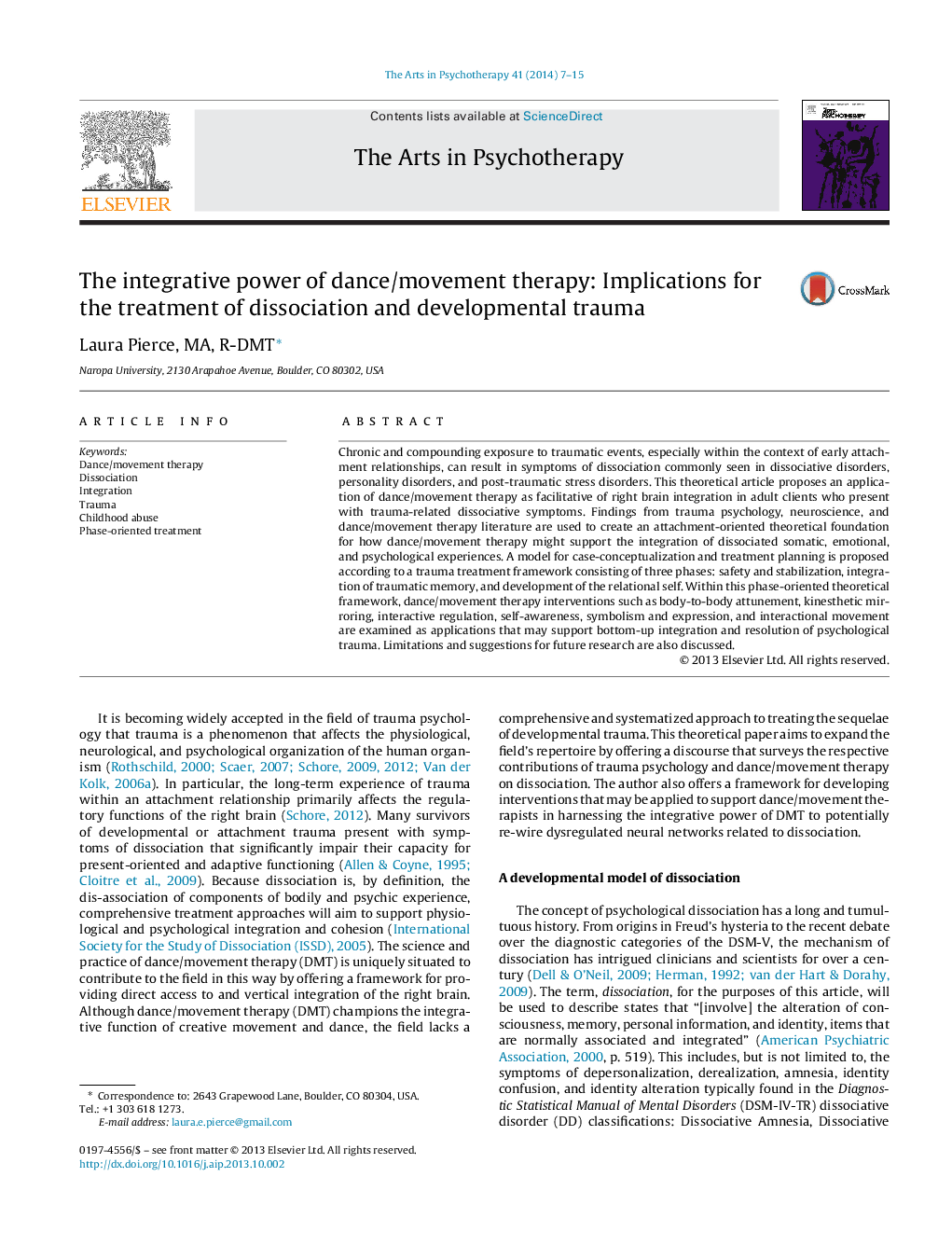| Article ID | Journal | Published Year | Pages | File Type |
|---|---|---|---|---|
| 10310315 | The Arts in Psychotherapy | 2014 | 9 Pages |
Abstract
Chronic and compounding exposure to traumatic events, especially within the context of early attachment relationships, can result in symptoms of dissociation commonly seen in dissociative disorders, personality disorders, and post-traumatic stress disorders. This theoretical article proposes an application of dance/movement therapy as facilitative of right brain integration in adult clients who present with trauma-related dissociative symptoms. Findings from trauma psychology, neuroscience, and dance/movement therapy literature are used to create an attachment-oriented theoretical foundation for how dance/movement therapy might support the integration of dissociated somatic, emotional, and psychological experiences. A model for case-conceptualization and treatment planning is proposed according to a trauma treatment framework consisting of three phases: safety and stabilization, integration of traumatic memory, and development of the relational self. Within this phase-oriented theoretical framework, dance/movement therapy interventions such as body-to-body attunement, kinesthetic mirroring, interactive regulation, self-awareness, symbolism and expression, and interactional movement are examined as applications that may support bottom-up integration and resolution of psychological trauma. Limitations and suggestions for future research are also discussed.
Related Topics
Health Sciences
Medicine and Dentistry
Psychiatry and Mental Health
Authors
Laura MA, R-DMT,
